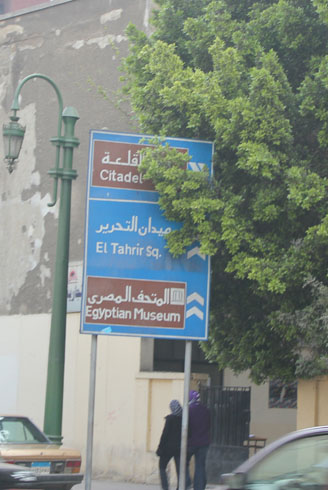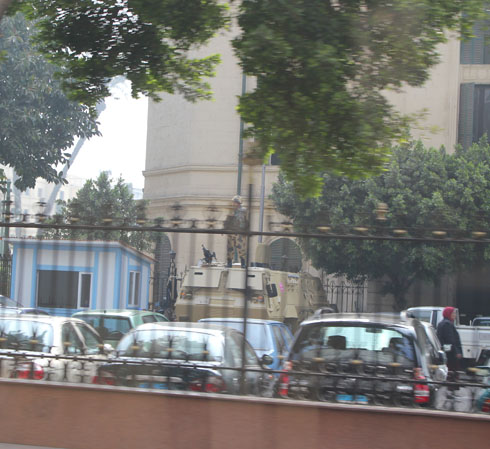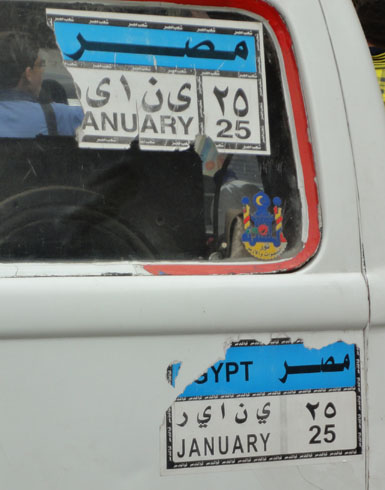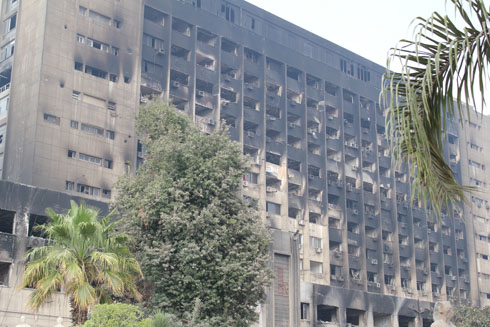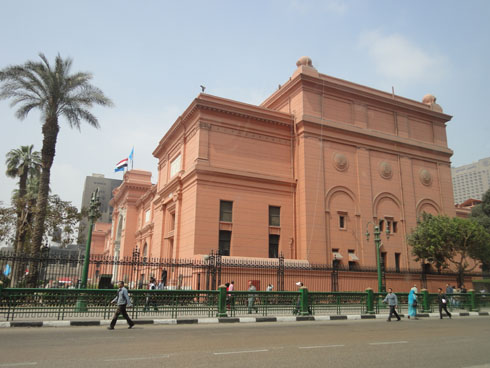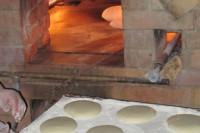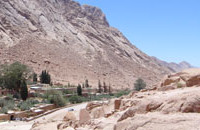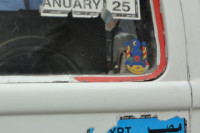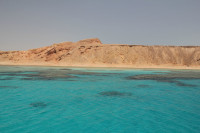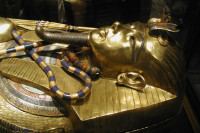Travel
Words on the Egyptian Revolution (Part 2)
My visit to Egypt during an historical time (2011):
When and how did the Egyptian Revolution start?
Our guide in Cairo was very talkative about the Revolution. It is like he had to talk about it. He explained it started many years ago with various demonstrations. Three years ago people already went out in the streets with signs and again last year.
So does it mean that what happened was bound to happen? Would there be another revolution after the ones of 1919 and 1952? Everyone was happy to tell us it started with Facebook.
Our guide said it started with people putting a date on the internet for “Jan 25” and asking them to come to the square. They thought there would only be a few people. It was a success as about 80,000 people meet on Tahrir Square. “Here is the power of modern technology”. He explained that was supposed to be a calm demonstration but the police tried to stop them and there were 2 dead there. “If the government had let them demonstrate, then the people would have gone home that night and it would have been over. Now it had to continue, how would you feel if you had seen a friend killed in front of your eyes?”
Demonstrations happened too in other parts of the country like in Alexandria, Suez, Ismailia, Mansoura and in the Sinai peninsula. Our tour guides in Luxor and Sharm el Sheikh, said it was ok there.
I asked our Egyptian friend if he experienced any food shortage during the 18 days, but he said no.
Facebook, Twitter and You Tube did wonders for the Revolution and bringing the news to the world.
The important figures and groups were:
- Wael Ghonim, a Google executive working from Dubai, who started an account on Facebook called “We are all Khaled Saeed“. Khaled was beaten to death by the police in June 2010. Quickly the Facebook account had over 400,000 members. Wael was missing since January 27th, arrested by security forces and set free on February 7th.
- April 6th movement with Asmaa Mahfouz. She put a video on her blog and ask for people to join her on January 25th. It was seen on Facebook and You Tube. She is also a member of the coalition of the Youth of the Revolution.
- Youth of the Revolution and Popular Democratic Movement for change.
�
Was the Revolution necessary?
Knowing that 40% of Egyptians live on less than 2 US dollars a day, one could not blame them for wanting some change.
But was it only low salaries that motivated the Egyptians?No.People from all classes were tired of high unemployment, corrupted police and government officials, unfair and manipulated elections. Until six years ago, there was only 1 candidate to run for the elections! So, elections had low turn-out with only 25% of people voting.
With approach of new elections in September, Egyptians were worried that the son of Hosni Mubarak, Gamal, would succeed him and inherit his power.While in Egypt especially in Cairo I really felt that the people are suffering from low incomes.
We had a little experience with one of our taxi drivers in Cairo, who asked twice as much tipp as we wanted to give him and told us before we left the car “Sir, Egypt is angry. Twice as much, you are two people.”
Other experiences show how much people need money: temple and museum keepers kiss the money you give them, salesmen follow everywhere, airport people grab your bags quickly to make tips…
In Cairo you see kids sellings things in the street everywhere. Mos of the time they sell bags of Tempo tissues. Sometimes scenes are really hard like the day we saw a child playing with stones and sticks outside of a mall. Next to him were the many Tempo tissues he should have been selling, but for a moment he allowed himself to be a child and to play. A situation like this one with children involved, makes you want to give money and help them out.
How is it since the Revolution?
In Egypt, when I went people were back at work. People went back to work the next day Mubarack resigned. The Egyptian museum was fixed quickly after the lootings at the beginning of the Revolution. Tahrir Square is clean. One would never guess there was a Revolution.
Signs of the Revolution:
- tanks in Cairo and Luxor
- car signs with words Jan 25
- N.D.P. building burned on Tahrir Square
- cars turned upside down and burned next to the N.D.P. building
Results today:
End of March there was a limited numbe of tourists in Cairo. The pyramids of Giza and the Light and Sound shows had very few people visiting. The museum was mainly packed with Egyptians. The bazaar El Khalili was completly empty. When we flew to Sharm el Sheikh, our flight was not full and we were almost the only tourists.
Our hotel in Sharm had closed 3 restaurants of its 15. Our Nile cruise boat had 40 people instead of 80, but many boats were not even moving. We did see many tourists visiting the temples along the Nile. Probably what seemed a lot now is quite small compared to a normal month of March.
Our tour guide in Luxor said it was hard as we were his first clients since the Revolution and now it is going to be the low season.
Taxi drivers at the Cairo airport all want to bring you somewhere and it can be hard to wander through or out of the terminals!
The martyrs of the 2011 Revolution:
Egypt had to see many of its youth and population die for changes. It took 18 days, 846 deaths and more than 6000 wounded to see the 30 years’ regime of President Hosni Mubarak end.
�
Recent changes:
Now it is the army who runs Egypt, but it does not seem to disturb anyone there. They love the army. Different from the police, the army did not hurt the population during the demonstrations.
There had been more protests on Tahir Square since:
- February 13-14th (Sunday and Monday): police, bank, ambulance, transport and public workers demonstrate for better salaries.
- April 1st (Friday): big demonstration with motto “Save the Revolution”. Egyptians are fighting hard not to loose what they gained. They want immediate changes.
- April 8th (Friday): called “Day of Cleaning”. Old regime figures need to go away.
The N.D.P. party was dissolved on April 16th.
On May 24th President Hosni Mubarak and his sons, Alaa and Gamal Mubarak, were arrested and will be trialed soon.
The elections, which were to happen in September, may be pushed until next year.
We will have to wait a little bit longer to see some positive changes in Egypt and the Arab world.
If you are interested in Egyptian history, John R. Bradley wrote a very interesting book in 2009 called Inside Egypt.
There has been many videos about the Egyptian Revolution published on You Tube. Here are a few I like:
Ya Blady Song and video – I love my country from Ramy Gamal:
http://www.youtube.com/watch?v=J32XjDQlXgM&feature=related
Ya Blady with English subtiles:
http://www.youtube.com/watch?v=ItOG4khIaPI
Egypt Revolution Song – Jay Samel www.musicforegypt.com:
http://www.youtube.com/watch?v=h1CWS8t346M

